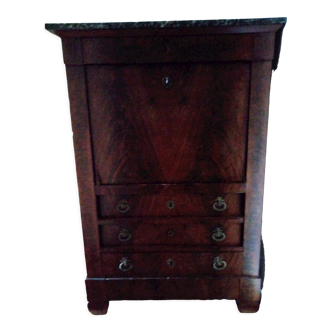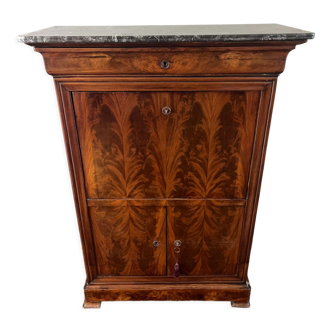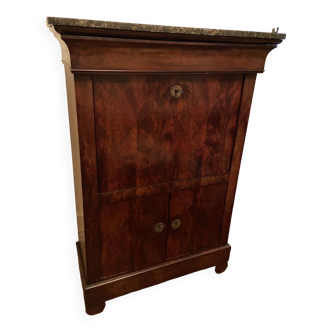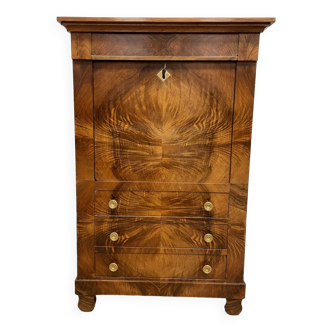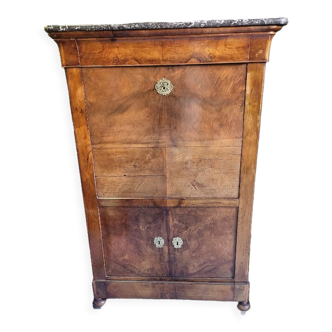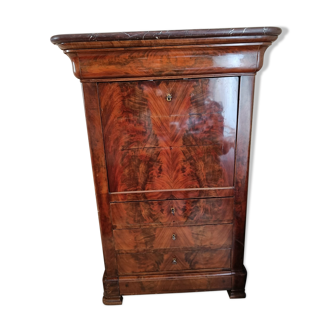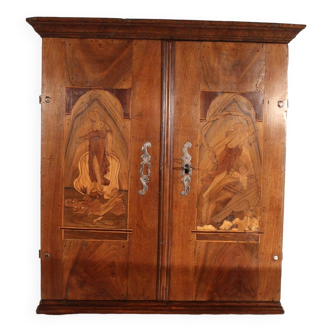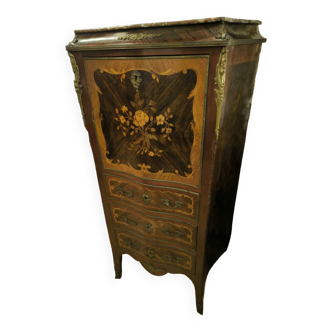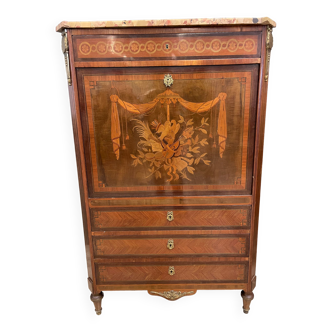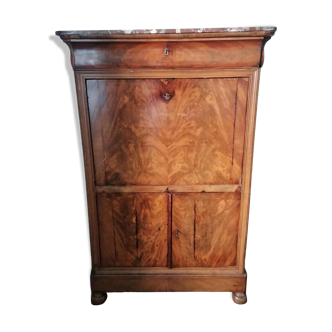Louis-Philippe secretary, mid-19th century, in burr walnut
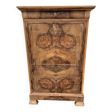
- Dimensions :
- H60 x W185 x D44
- Color :
- wooden
- Material :
- wood
- Style :
- vintage
Louis Philippe period writing desk, mid-19th century, is made of burr walnut. The burrs of walnut are flamed because they present many aesthetic designs. These designs have complex patterns of high contrast and tangled veins on a naturally dark background of varying intensities. This writing desk placed in an office or occupying a corner of the living room is a private place reserved for writing, correspondence, storing mail, and documents. All these more or less precious papers are thus safely sheltered from prying eyes. The main function of this piece of furniture is therefore well fulfilled: to keep secret. The writing desk includes four drawers, one of which is concealed in the upper part of the piece of furniture, and in the central part a panel. This part opens horizontally with a flap. Once open, the panel serves as a table on which it is possible to write. The panel in question is covered with worn leather. This dates back to the creation of the piece of furniture. Once opened, the flap reveals a theater composed of six small drawers on one side and two small secret drawers on each side. The latter are apparently impossible to open, but an ingenious system hidden in a piece of furniture releases a spring and then allows them to open; it's up to you to find it! The middle drawer, once removed from the piece of furniture, leaves room for a false bottom blocked by a board. All the drawers are dovetailed, ensuring perfect solidity. The drawers can be opened daily and contain many sometimes heavy objects. They slide perfectly. The discreet entries do not protrude from the surface. They are made of brass and are called "fil entries." The key is used to close all the drawers. The top of the writing desk is made of solid walnut. The edge of the top is finished with a molding called a "pair of buttocks." The back of the writing desk has a panel.




















































